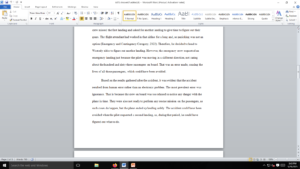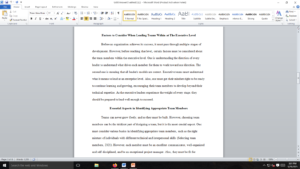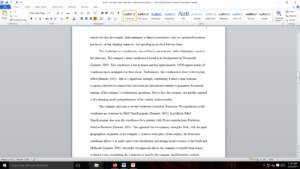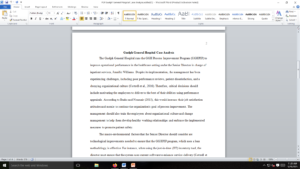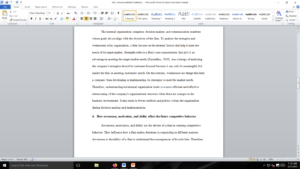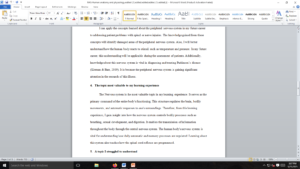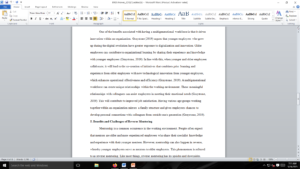Software solution organization
1. Writing a reflection paper about the presentation (Kian Boloori). The format should be as follows:
- Paragraph 1: This is a summary paragraph where you describe the presenter and write a short summary of the main areas of their presentation.
- Paragraph 2: Write about three takeaways from this presentation. What was interesting or memorable in the presentation? What advice will you take with you and apply? Provide sufficient detail about what they said and how you plan to apply the information or why you thought it was interesting.
- Paragraph 3: Write a thank you note for our presenter’s time. If you have any suggestions on how they could improve their presentation, write it here in a respectful way. Be aware that I will be sharing some of your papers with the presenter, so if you plan to connect with them on LinkedIn, do an especially good job.
- Expected length is 2/3rd a page, single-spaced.
Speaker profile:
Kian Boloori is the Director of Compensation at Assembly, a leading software solution company that helps merchants navigate their eCommerce journeys. He’s been a Compensation professional for over 9 years and has designed base pay programs, job infrastructures, and stock equity plans from scratch for several companies. Kian is also the President of the Orange County Compensation and Benefits Association and is the co-instructor of one of the organization’s signature programs—”Compensation 101 for the HR Professional.”
Kian has his BA in History from UCLA and his MBA from UC Irvine.
2. Career Plan Activity (Base on Career Plan)
Map out your intended career plan through retirement. List your life priority (career, family, balance), target job + salary estimate, timetable to achieve, and preparation/ development needed. The focus is on what skills/experience you need to get to prepare yourself for the next job.
For example: Priority: career advancement
HR analyst ($45-60K)
1-3 years from now
Finish MBA, obtain at least 1 HR-related internship, join the MBA student association or a professional organization related to your career.
- There are examples on BeachBoard to follow
- You can use bullet points and bold sections to make the information easy to locate
- Use feedback from your previous performance appraisals
3. Discussion post: Topics: Training, Performance Management (Chapter 11: Compensation – Powerpoint file)
Discussion should be an analysis of either a topic discussed in the lecture for that week and/or of one of the readings from that week. Discussion should be thoughtful and 1- 2 paragraphs long, only 120 – 200 words. You are encouraged to apply the material to an HR-related problem you’ve experienced or managed at work.
Answer preview
go up as the years progress based on my performance. Some of the duties I will be performing include preparing financial statements, analyzing the organization’s accounts, and ensuring compliance with financial reporting. To effectively do this, I must possess the requisite experience with data entry and accounting software, excellent comprehension of accounting procedures and rules, analytical skills, and an ability to work independently. Finishing my MBA and getting an internship at an accounting firm will ensure I am equipped with pertinent knowledge, skills, and experience to succeed as an accountant for a Fortune 500 company. I hope to retire from the company with all my benefits.
Part III: Discussion post: Topics: Training, Performance Management
Organizations are expected to ensure that their compensation approaches promote fairness. Failure to do this can adversely affect employees’ attitudes and behaviors (Noe et al., 2021). When this happens, employees’ motivation, job engagement, and job satisfaction levels will decline (Noe et al., 2021). Due to this, their productivity and performance will decline (Noe et al., 2021). One of the major challenges organizations deals with emanates from the fact that employees often assess their compensation relative to that offered to their colleagues. For organizations that fail to embrace pay equity, these comparisons will inadvertently lead to a change in employees’ attitudes and behaviors due to the unfairness of the pay structures of philosophies used by the organization (Noe et al., 2021). To prevent this from happening, organizations should only use factors such as performance, capability, seniority, and differences in jobs when developing different compensation structures for their employees.
[882 Words]
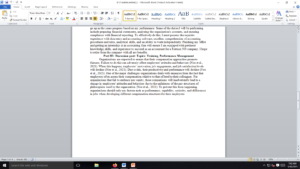
Software solution organization

